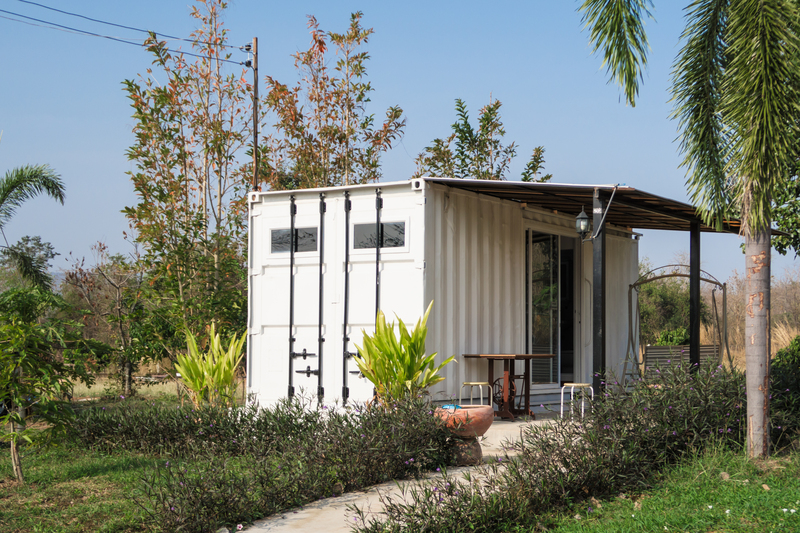Resourceful Steps to Trim Down Household Waste
In today’s fast-paced world, the accumulation of household waste has become a growing concern for environmentally conscious individuals. Reducing daily garbage not only helps minimize our ecological footprint but also saves money and instills better living habits. This comprehensive guide details effective, resourceful steps to trim down household waste, presenting practical tips and creative ideas to start your journey to a zero-waste lifestyle.
Why Reducing Household Waste is Important
Household waste reduction offers substantial environmental, economic, and societal benefits. By minimizing home waste, you help conserve natural resources, cut greenhouse gas emissions, and mitigate pollution caused by overflowing landfills. Additionally, it supports personal savings and boosts local economies through increased demand for reusable goods and sustainable services.
The Negative Impact of Excessive Domestic Waste
- Landfill Overflow: Landfills emit methane, a potent greenhouse gas causing climate change.
- Resource Depletion: Overconsumption means finite resources are tapped for products that quickly end up as waste.
- Pollution: Trash in landfills, waterways, and landscapes degrades ecosystem health and wildlife safety.
- Economic Strain: Managing household refuse increases community disposal costs and taxes.

Essential Steps to Decrease Household Waste
Adopting a zero-waste mentality may seem daunting at first, but by embracing specific changes and developing consistent habits, anyone can radically reduce their garbage output. The following resourceful steps offer actionable solutions for any household:
1. Perform a Household Waste Audit
Begin your waste reduction journey by conducting a home trash audit:
- Collect all waste from your home for a week.
- Sort it by categories: organic, recyclables, non-recyclable, hazardous.
- Identify the most common items in your trash (e.g., food scraps, plastic packaging).
- Analyze patterns and target categories that contribute most to your bin.
With data in hand, track your progress monthly and adapt strategies to intensify waste reduction results.
2. Embrace the Five Principles: Refuse, Reduce, Reuse, Recycle, Rot
- Refuse: Say no to single-use items, excess packaging, and unsolicited freebies.
- Reduce: Limit new purchases, prioritize quality over quantity, and plan shopping to avoid overbuying.
- Reuse: Opt for reusable bags, containers, and water bottles.
- Recycle: Separate materials like glass, cans, paper, and plastics for local recycling programs.
- Rot: Compost organic waste such as vegetable peels, coffee grounds, and eggshells.
Integrating these principles into your lifestyle is vital for trimming down home trash in the long term.
3. Shop Smart: Bulk, Local, and Package-Free
Revisit your shopping habits to drastically cut down household waste:
- Buy in bulk: Minimizes packaging and often saves money.
- Support local farmers’ markets: Reduces transport emissions and packaging waste.
- Bring your own containers and reusable bags: Many stores allow shoppers to fill jars or cloth bags for produce, grains, and spices.
- Opt for package-free or minimally packaged goods: Choose brands committed to sustainable packaging.
*Eliminating excessive packaging is one of the most effective steps to lessen household waste every week.*
4. Transform Food Waste
Food scraps and spoiled groceries are among the biggest contributors to household garbage.
- Learn proper food storage techniques to extend produce shelf life.
- Create a meal plan and shopping list to avoid over-purchasing perishables.
- Embrace leftovers and creative recipes that use up odds and ends.
- Compost your food scraps – whether you have a garden or use a countertop composter for apartments.
Reducing food waste not only trims down garbage but also saves hundreds of dollars per year per household.
Innovative Ways to Reuse and Upcycle
5. Reimagine “Single-Use” Items
Before discarding anything, ask yourself: “Can I give this a second life?” Many household items are easily upcycled, such as:
- Glass jars: Use as food containers, vases, or organizers.
- Old T-shirts: Cut into cleaning rags or create tote bags.
- Egg cartons: Serve as seed starters for your garden.
- Cardboard boxes: Perfect for storage, crafts, or moving.
6. Swap, Donate, or Sell Unwanted Goods
- Host a clothing or toy swap with neighbors and friends.
- Donate gently used items to local charities or shelters.
- Sell everything from electronics to books through online marketplaces.
- Repurpose furniture and appliances before discarding.
Extending the life of products reduces landfill waste and supports the circular economy.
7. Adopt Refillable and Reusable Solutions
- Switch to refillable cleaning products and personal care items (e.g., soaps, shampoos, detergents).
- Use reusable coffee pods, sandwich wraps, and beeswax food covers instead of plastic alternatives.
- Invest in a good set of reusable shopping bags, produce bags, and lunch containers.
Smart Recycling and Safe Disposal Techniques
8. Stay Informed About Local Recycling Rules
Recycling rules differ widely by region. Ensure you:
- Familiarize yourself with your council’s accepted materials list.
- Rinse recyclables and remove labels as required.
- Avoid “wishcycling” – putting non-recyclable items in the bin can contaminate entire batches.
9. Properly Dispose of Hazardous Waste
- Set aside batteries, light bulbs, electronics, paints, and chemicals.
- Drop off these items at dedicated collection centers or special events.
- Never pour chemicals or medicines down the drain to prevent water contamination.
*Safe disposal protects the environment and keeps your home organized and clutter-free.*
Involving the Whole Family with Fun and Education
10. Make Waste Reduction a Family Affair
- Set up visible recycling and composting bins in high-traffic areas.
- Host monthly declutter challenges and reward creative reuse projects.
- Share books, documentaries, and apps on sustainability for household learning.
- Let kids participate in composting, upcycling crafts, and garden planning to build lifelong habits.
The Benefits of Sustainable Living
Trimming down household waste delivers an array of positive effects beyond environmental stewardship:
- Financial Savings: Buy less, waste less, and spend less on household items.
- Healthier Homes: Reduce exposure to ticking toxins from plastics and household chemicals.
- Clutter Reduction: Less trash means a tidier, more manageable living environment.
- Stronger Communities: Encourage local sharing economies, swaps, and reusable product businesses.
Troubleshooting Common Challenges
Overcoming Setbacks When Reducing Household Waste
Transitioning to a low-waste lifestyle isn’t always easy, but anticipating common obstacles can help you succeed:
- Initial Inconvenience: Start with small steps – even swapping one disposable item for a reusable one makes a difference.
- Lack of Access: If package-free stores are far away, focus on bulk-buying or reducing in other categories such as food waste and reusing containers.
- Family Resistance: Involve everyone in the household by making the process fun and highlighting shared goals.
- Misunderstood Recycling: Double-check local rules and educate household members with clear signs or bin labels.
Practical Tools and Resources for Reducing Household Waste
- Zero-Waste Starter Kits: Equip your home with reusable basics like water bottles, produce bags, and lunch boxes.
- Composting Supplies: Starter bins, counter bins, and even worm farms fit all home types.
- Apps: Download apps like Too Good To Go, OLIO, or iRecycle for connecting with food-sharing and recycling resources.
- Educational Materials: Blogs, YouTube channels, and community workshops can inspire new ideas.

Zero Waste Inspiration: Real-Life Success Stories
Looking for motivation? Across the globe, families and communities are proving it’s possible to cut down trash dramatically:
- A California family of four reduced their weekly trash to less than a mason jar through bulk buying, composting, and reuse.
- Schools hosting zero-waste lunch programs divert thousands of pounds from landfills each year.
- Communities organizing repair cafes and swap shops strengthen social bonds while keeping goods out of the waste stream.
Conclusion: Every Step Matters in Trimming Down Household Waste
There is no single “right” way to lower domestic refuse – rather, it’s the cumulative effect of mindful decisions and incremental changes. Whether you start with composting vegetable scraps, switching to refillable products, or simply buying less, your actions have a lasting impact on the planet and future generations.
Resourceful steps to trim down household waste are within everyone’s reach:
- Analyze your trash and target big-impact habits.
- Involve your household for lasting change.
- Stay informed, inspired, and celebrate each win on your zero-waste journey!
By implementing these strategies, you’ll discover that reducing household waste is not only achievable, but it can also be rewarding, cost-effective, and personally transformative. Start today and make your home a leader in sustainability for a healthier tomorrow!